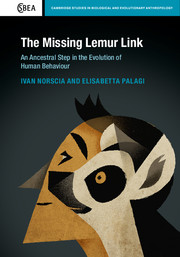Book contents
- Frontmatter
- Dedication
- Contents
- List of contributors
- A message from Jane Goodall
- Foreword
- Preface by the authors
- Acknowledgements
- Part I Communication: from sociality to society
- Part II How conflicts shape societies
- Part III Why lemurs keep in touch
- Part IV Closing remarks
- 9 Understanding lemurs: future directions in lemur cognition
- Looking back to the future – Michael Huffman
- Index
- References
9 - Understanding lemurs: future directions in lemur cognition
from Part IV - Closing remarks
Published online by Cambridge University Press: 05 May 2016
- Frontmatter
- Dedication
- Contents
- List of contributors
- A message from Jane Goodall
- Foreword
- Preface by the authors
- Acknowledgements
- Part I Communication: from sociality to society
- Part II How conflicts shape societies
- Part III Why lemurs keep in touch
- Part IV Closing remarks
- 9 Understanding lemurs: future directions in lemur cognition
- Looking back to the future – Michael Huffman
- Index
- References
Summary
When we started considering the idea to write this book on lemurs’ behaviour in 2010 we thought of making reference to the relatively few experimental studies on lemur cognition in the introduction, mentioning them as a promising novel branch of investigation for strepsirrhines. But over the past few years the research on the subject has blossomed and many articles have been published on scientific journals, converting the lemur cognition domain in one of the most flourishing fields of investigation of primatology, anthropology and comparative psychology. We realised, then, that we could not dismiss cognitive studies with a couple of paragraphs in the introductory section and we decided to reserve the final chapter to the topic, which probably better than others points towards unexplored lemur potentials and future directions for a more comprehensive understanding of the primate world. In the following pages we try to provide the reader with the basic elements that we think are necessary to understand what is going on when lemurs are tested on cognitive tasks. We suggest that the reader uses this chapter for orientation, as a sort of compass to navigate through the different aspects of lemur cognition. If it is of interest, we invite the reader to consult the original papers to gather further details on the experimental apparatuses and procedures.
Manipulative lemurs? Maybe
In her 1966 Science article, Alison Jolly observed that ‘some prosimians, the social lemurs, have evolved the usual primate type of society and social learning without the capacity to manipulate objects as monkeys do. It thus seems likely that the rudiments of primate society preceded the growth of primate intelligence, made it possible, and determined its nature’.
As primatological studies have advanced, some evidence of tool manipulation ability, a possible precursor of tool use, has been found in lemurs (for a review see Fichtel and Kappeler, 2010; Schilling, 2013). Only few incidents of spontaneous object manipulation have been observed in the wild. The aye-aye (Daubentonia madagascariensis; Figure 9.1) is known for using the probing middle finger for tapping, and extracting nectar, kernels and insects embedded in trees or branches; it can also use the fourth finger for tasks requiring strength, scooping action and deep access (Lhota et al., 2008).
- Type
- Chapter
- Information
- The Missing Lemur LinkAn Ancestral Step in the Evolution of Human Behaviour, pp. 247 - 279Publisher: Cambridge University PressPrint publication year: 2016

